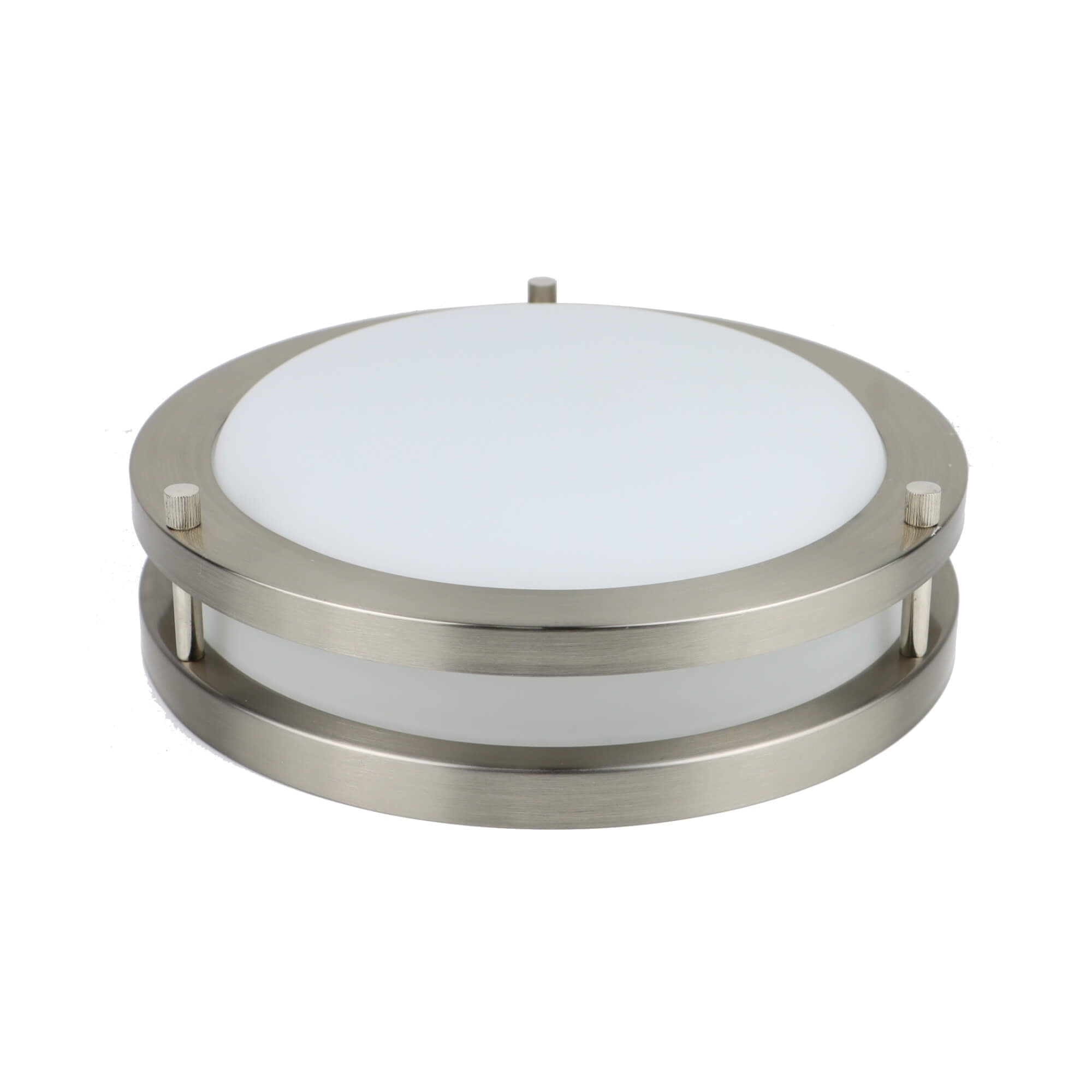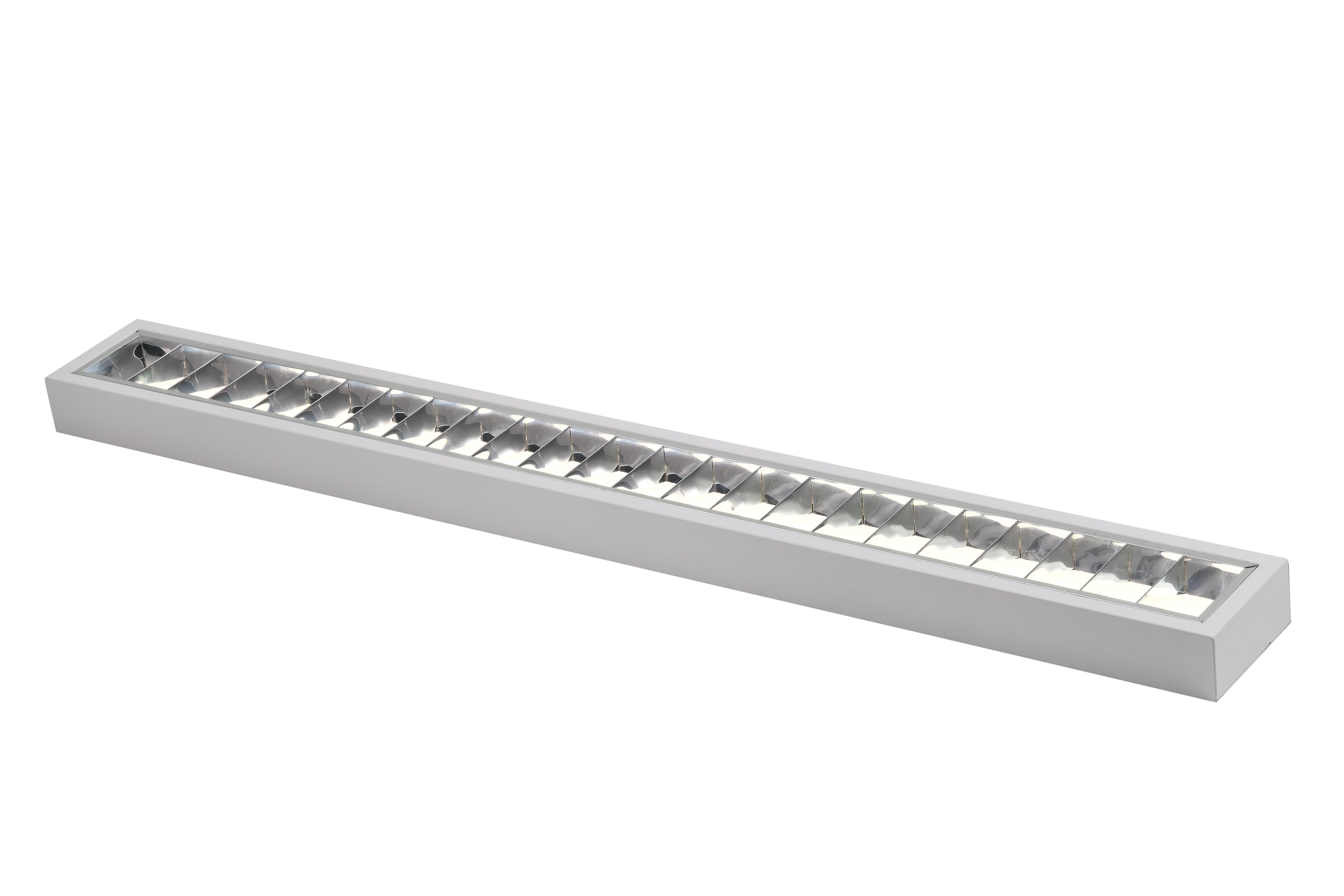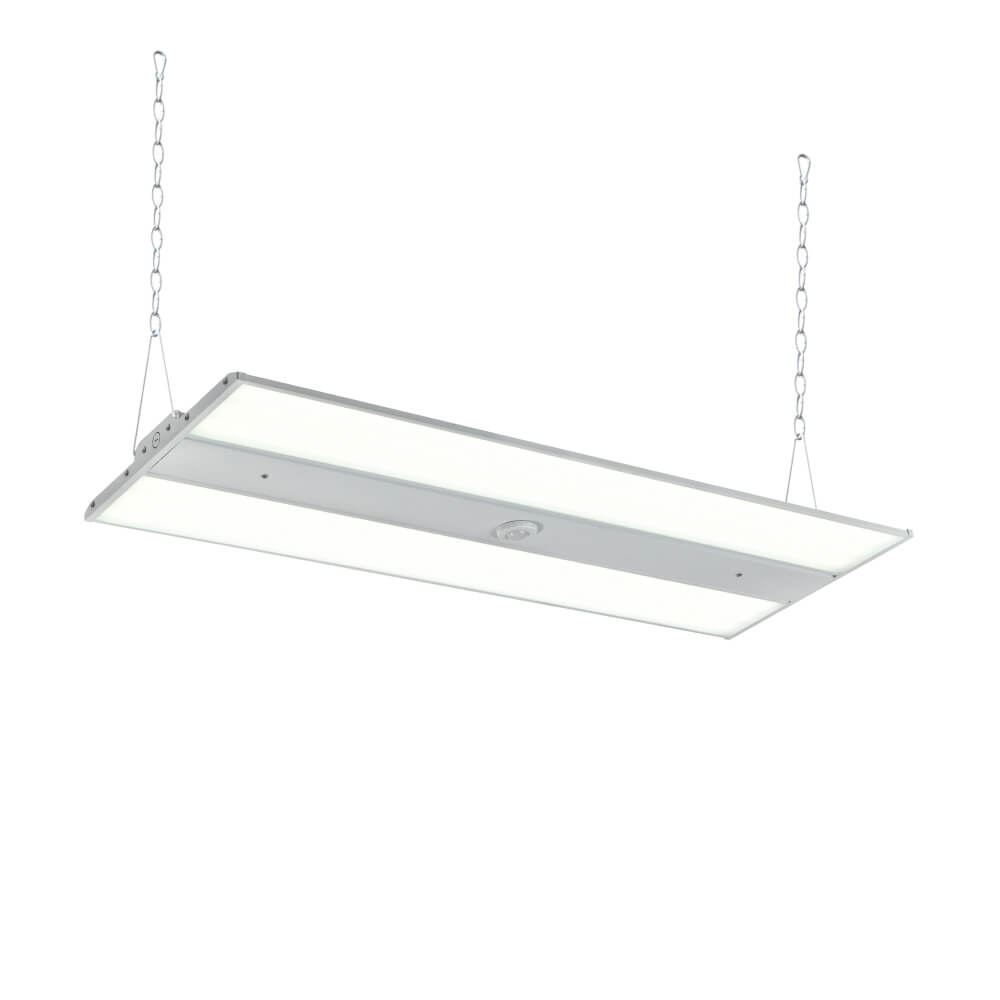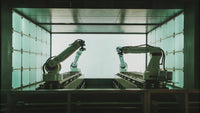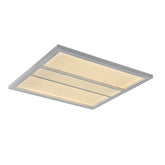How to Choose the Right LED Lighting Products for Your Data Center
Selecting the perfect LED lights is crucial for modern data centers, where precision and efficiency can't be compromised. It's more than just picking bulbs; it's about finding lighting solutions that save energy, last longer, and keep your data center cool. Data center managers often grapple with these choices, balancing performance against cost. This guide is tailored to simplify that decision-making process, equipping you with the knowledge to choose LED products that match your data center's unique needs, ensuring your operations shine bright without burning through your budget.
Understanding the Basics of LED Lighting for Data Centers
When we talk about LEDs, or Light Emitting Diodes, we're referring to a type of lighting that's taken the tech world by storm, chiefly due to its energy-saving superpowers. But what makes LEDs the go-to choice for data centers? Here's the lowdown:
Benefits of LED Lighting:
- Energy Efficiency: LEDs consume significantly less power than traditional lighting options, leading to substantial energy savings.
- Long Lifespan: They last much longer than other types of bulbs, reducing the need for frequent replacements and lowering long-term maintenance costs.
- Reduced Heat Output: LEDs emit very little heat, decreasing the strain on cooling systems within a data center and minimizing the risk of heat-related equipment issues.
- Cost Savings: Lower energy usage and reduced maintenance needs translate directly into cost savings over time.
- Enhanced Safety: With lower operating temperatures, LEDs reduce the potential for heat-related accidents or damage.
- Environmental Impact: Their energy efficiency and longer lifespan mean that LEDs have a smaller carbon footprint compared to traditional lighting, supporting greener operations.
Why LEDs are Preferred in Data Center Environments:
- High Reliability: LEDs are known for their durability and less likelihood to flicker or burn out suddenly, which is essential for the continuous operation of a data center.
- Seamless Control Integration: Thanks to their compatibility with modern control systems, LEDs can be easily integrated into data center management infrastructures for automated lighting adjustments.
- Better Light Quality: With options to customize color temperature and brightness, LEDs offer superior light quality that can be tailored to various areas within a data center.
- Adaptability: LED lighting solutions can be designed to fit a variety of spaces and can easily adapt to changes in layout or design without extensive overhauls.
- Energy Compliance: Many LED products meet strict energy standards and certifications, helping data centers comply with industry regulations and sustainability goals.
How to Assess Your Data Center's Lighting Needs
Before diving into the sea of LED options, it's crucial to take a step back and evaluate what your data center specifically requires to hit that sweet spot of luminosity efficiency.
Evaluating Current Lighting Systems:
Start by analyzing your current setup:
- Costs: What's the monthly energy bill looking like? Are you spending a fortune replacing bulbs or paying through the nose because old fixtures churn out heat like nobody's business?
- Performance: Do some areas look like a stage spotlight while others are more cave-like? Inconsistent lighting can not only affect work efficiency but also how your equipment operates.
- Maintenance: Consider the man-hours spent on upkeep. If maintaining your current lighting feels like a full-time job, it's time for an upgrade.
Determining Illumination Requirements:
Once you've scoped out the current state of affairs, pinpoint what you actually need:
- Rack Areas: These are the heartbeats of data centers and require precise lighting to avoid errors during critical tasks. LEDs offer targeted, adjustable illumination to keep everything visible.
- Workspaces: Where your staff spends their time needs to be well-lit for comfort and efficiency. LEDs with adaptable color temperatures can boost focus and reduce eye strain.
- Access and Security: Well-lit spaces deter unauthorized access and help security personnel and systems function optimally. Motion sensors and timed LEDs can provide light as needed without waste.
Consideration of Data Center Size and Scale:
When it comes to lighting, the size of your data center guides what you'll need:
- Large Data Centers: These facilities can be vast, with different areas serving different purposes. You wouldn't use the same lighting for a busy workbench area as you would for rows of servers that rarely have human visitors. For example, bright lights might be installed over workstations where technicians handle delicate tasks, while dimmer, more energy-efficient lights could be used in low-traffic storage areas.
- Small Data Centers: Smaller data centers don't have as many areas to light, so a less complex system can work well. However, each light fixture should provide good-quality lighting. It's like having fewer lights in a small office; you want to make sure they illuminate the space effectively without any dark spots.
- Scalability: If your data center is going to grow, choose lighting that can grow with it. This means picking lighting solutions that are easy to add on to. That way, if you build new sections or add more equipment, you can install additional lights quickly and without having to rethink your entire setup.
No matter the size of your space, finding the right LED lighting means considering how your facility operates now and how it might change in the future. The goal is always to have proper lighting where and when you need it, without using more than necessary.
Key Features to Look for in Data Center LED Products
When shopping around for the best LED lighting, there's a checklist of features you'll want to tick off to ensure you're making a wise investment. Here's what to keep an eye out for:
Brightness (Lumens) and Light Quality:
- Brightness: In practical terms, lumens measure the amount of light you get from a bulb. For example, in a data center, aisles between server racks might be sufficiently lit with LED fixtures that provide around 500 to 600 lumens. However, areas where technicians work on the servers may require fixtures with higher lumens, say 1000 lumens, to ensure clear visibility for detailed tasks.
- Light Quality: This is about how accurately the light shows the real color of objects. It's important when staff need to distinguish between different colored wires or components. An LED bulb that doesn't alter the appearance of colors makes it easier to work without mistakes.
Color Temperature and Color Rendering Index (CRI):
- Color Temperature: The Kelvin scale tells you what kind of light a bulb will give off. Lower Kelvin numbers mean the light looks more yellow; higher numbers mean it looks bluer. In a data center, a light with a Kelvin rating of around 4000 gives a clear, bright light that's good for focus without being too harsh.
- CRI: The closer the CRI number is to 100, the more accurate the colors look under the light. A high CRI is useful in a data center because it helps people see the true colors of cables and indicators, which helps prevent errors during maintenance or operations.
Energy Efficiency Ratings:
When you're checking for energy efficiency, LEDs are a smart pick because they use less power. For instance, an LED that runs at 15 watts can give you the same amount of light as a 40-watt fluorescent bulb. That's more than half the energy savings. Look for those that have certifications; these products are confirmed to use even less energy while still providing the brightness you need. They not only cut down your electricity costs but also support your company's green initiatives by reducing carbon emissions.
Compatibility with Existing Infrastructure (DCIM systems):
Your current Data Center Infrastructure Management (DCIM) system might already be set up to handle certain types of lights. So, when you're adding new LEDs, it's important to make sure they can communicate with this system. For example, if your DCIM supports dimming or remote control of lights, you'll need LEDs that are compatible with these features. This way, you can adjust lighting from a central location without manual intervention, making it simpler to manage and conserve energy.
Heat Dissipation Properties:
Data centers pack a lot of hardware into a small space, so reducing extra heat helps keep everything running efficiently. LEDs with effective heat sinks absorb and dissipate heat, preventing it from affecting nearby equipment. This not only lowers the chance of overheating but also means your air conditioning doesn't have to work as hard, further saving on energy costs.
Product Lifespan and Warranty:
LEDs are known for their long lifespans. Many LEDs have a rated life of around 50,000 hours, which means if you run them for 10 hours a day, they could last over 13 years. That's a lot less time spent on replacing bulbs, not to mention the cost savings. Warranties are just as important-look for options that offer lengthy warranties, which can cover any premature failures and provide replacements at no additional cost.
Certifications and Standards Compliance (e.g., UL, DLC, Energy Star):
Certifications can tell you a lot about the quality of an LED product. For instance, the UL (Underwriters Laboratories) mark means the product has been tested and meets specific safety standards. Objectively understanding and mastering LED lighting standards in industrial spaces is an indispensable part of the evaluation process.The DLC (DesignLights Consortium) lists high-quality, efficient LED products that may also qualify for energy rebates. And as mentioned earlier, ENERGY STAR-rated products meet strict energy efficiency guidelines set by the EPA. These certifications help ensure that the lights are safe to use in your data center and are economically and environmentally beneficial.
Smart LED Lighting Solutions for Efficient Data Center Operations
In a data center, managing the lighting isn't just a matter of flipping a switch on and off. With the right features and accessories, you can tailor your lighting to fit different situations and needs, which makes your operation more efficient and flexible. Let's explore some scenarios where these tools can be beneficial:

Control Features:
- Daylight Sensor:Imagine it's a bright sunny day, and your data center is filled with natural light pouring in through the windows. Daylight sensors can automatically dim the LED lights, taking advantage of the sunlight, reducing energy use, and maintaining an ideal lighting level.
- Occupancy Sensor: In areas that are only occasionally occupied, like storage rooms or seldom-used corridors, occupancy sensors play a pivotal role in ensuring safety. They efficiently turn lights on when someone enters and off when they leave, thus using LED lighting for enhanced safety in an industrial space.
- Integral Sensor Receptacle: With this feature, one LED fixture could accommodate multiple sensors without needing additional installations. It's like having a multi-tool; instead of needing a separate sensor for different functions, you have one fixture that handles it all.
- High-end Trim: Data centers operate 24/7, but during off-peak hours, you might not need full brightness. A high-end trim setting allows you to cap the maximum light level, providing sufficient illumination for security and late-night staff while saving energy.
- Bluetooth: Sometimes, adjustments need to be made quickly or from a distance, such as when there's a sudden change in server activity requiring immediate attention. Bluetooth connectivity lets you control the lighting directly from a computer or smartphone, offering convenience and rapid response times.
Accessories:
- Sensor Control: On a rack-by-rack basis, installing dedicated sensor controls could help manage the light according to the specific schedule and activity around each server rack, rather than lighting the whole room uniformly.
- Emergency Kits: Consider a power outage scenario; emergency kits would keep critical areas lit, ensuring safety and minimizing disruption to operations until the main power supply is restored.
- Suspension Kits: Suspension kits provide the flexibility needed in a data center. For example, if you reorganize your space and move server racks, the lights can be easily adjusted to the new layout without needing a complete reinstallation.
Advanced Technology:
- Switchable Color: If technicians are working long hours, especially at night, being able to switch to a warmer light can reduce eye strain and fatigue. Conversely, a cooler light during the day may increase alertness and productivity.
- Adjustable Lumen: In maintenance areas, you might need very bright light for technicians to see small components clearly. But once the work is done, you can lower the brightness to save energy and create a more relaxed environment.
Using these features effectively can lead to a smarter, safer, and more cost-effective data center. It demonstrates thoughtful management by adapting to various conditions with the appropriate lighting, resulting in benefits for both the workers and the operational budget.
How to Select a Right Vendor for Your Data Center
Selecting the right vendor for your data center's LED lighting and considering how it fits into your budget requires a careful approach. Here are some steps to help guide you through the process:
Comparing Vendors and Product Reviews:
First, identify a list of vendors that supply LED lighting suitable for data centers. Look for those with a track record in the industry, as they're more likely to understand the unique needs of data center operations.
When you have your shortlist:
- Check Reviews and Testimonials: See what other customers, especially those running data centers, have said about their products and services.
- Compare Product Specifications: Make sure the LEDs meet the necessary brightness, color temperature, CRI, and energy efficiency requirements.
- Evaluate Support and Warranties: Good customer support can be crucial, especially if you encounter issues down the line. A comprehensive warranty can offer additional peace of mind and protection for your investment.
- Request Demonstrations: If possible, have the vendor demonstrate the product. This can give you a clear idea of how it performs in an environment similar to yours.
Calculating Return on Investment (ROI):
An ROI calculation will help quantify how investing in new LED lighting compares to your current setup. Factors to consider include:
- Energy Savings: Calculate the difference in energy use between your old lighting and the proposed LEDs over a given period.
- Maintenance Costs: Factor in the savings from less frequent bulb replacements and reduced labor due to longer-lasting LEDs.
- Rebates and Incentives: Include any utility rebates or government incentives available for energy-efficient lighting upgrades.
- Productivity Improvements: Although harder to quantify, improved lighting can lead to fewer errors and higher productivity, which can also be factored into ROI.
To calculate ROI, subtract the total cost of ownership (including installation, maintenance, and operational costs) of the LED lighting from the benefits (energy savings plus any productivity gains), then divide by the total cost of ownership. An ROI greater than 0 would indicate that savings exceed costs over time.

Budgeting for Upfront Costs vs. Long-Term Savings:
It's essential to balance the initial outlay with the long-term financial benefits:
- Upfront Costs: These include purchasing the lights, installation, and any disruption to operations during the upgrade. Be realistic about these costs and ensure you have a clear quote from vendors.
- Operational Savings: LEDs consume less energy and have a longer lifespan than traditional lighting solutions, which leads to ongoing savings in utilities and maintenance.
- Strategic Planning: When budgeting, consider your data center's growth plans. Investing in scalable solutions now could save additional expenses later.
While the upfront costs may seem high, the reduction in energy consumption and maintenance costs associated with LED lighting often results in significant savings over time. It's this balance between immediate expenses and future savings that will ultimately influence the best decision for your data center.
Final Thoughts: Selecting LED Lighting That Meets Data Center Demands
Choosing the right LED lighting for your data center is a strategic decision that affects not just visibility, but also operational efficiency and cost management. The key is to select products that deliver on energy savings, have a long lifespan, and integrate well with your existing infrastructure. By considering the specific needs of your data center, evaluating vendor options carefully, and understanding the financial implications of switching to LEDs, you can make an informed choice that pays off in the long run. With the right approach, your investment in LED lighting will illuminate your data center's path to a brighter, more efficient, and cost-effective future.
